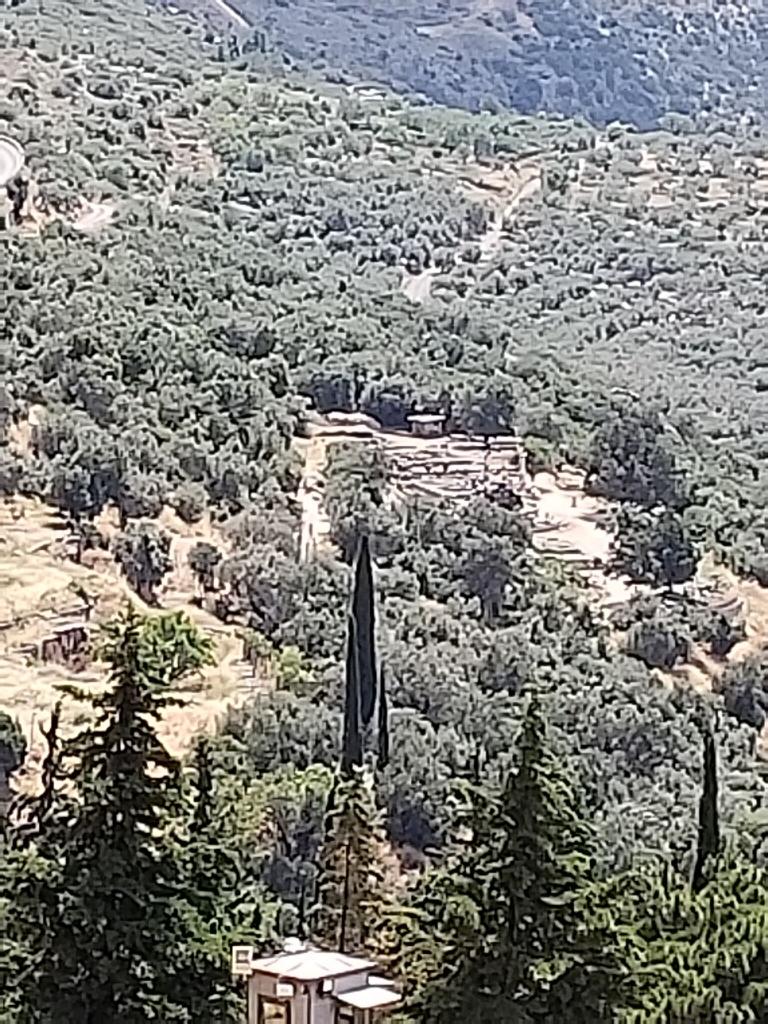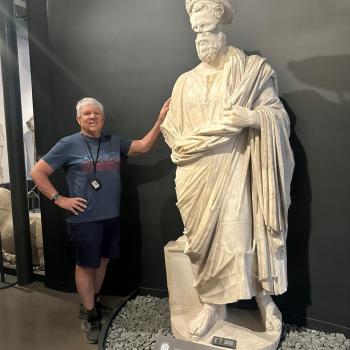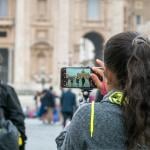Not for everyone was the steep journey up to the oracle of Delphi in the Temple of Apollo (the god of prophecy), but many made the trip. What one needs to understand is that in ancient Greece, prophecy was a matter of consultation, by and large. That is, one went to the Pythia to ask pertinent questions about one’s life and future— Should I marry this woman? Should I buy this land? Will I ever get well? Should I go to war against X? Famously the answers of the Pythia as interpreted by the priests called prophetes, were ambiguous. ‘If you marry this man, joy will be found’ (but by whom??) ‘If you go to war against the Persians, a great victory will be won’ (but by whom?). Probably, when Paul silences the Greek speaking women in Corinth it is because they were interrupting the oracles of the prophets in the congregation by asking personal questions. Paul says– no, ask such questions at home. He is clearly not banning women from speaking in church, as 1 Cor. 11 makes clear when he says they can pray and prophesy.
Here are some shots of Delphi, high above the gulf next to Corinth….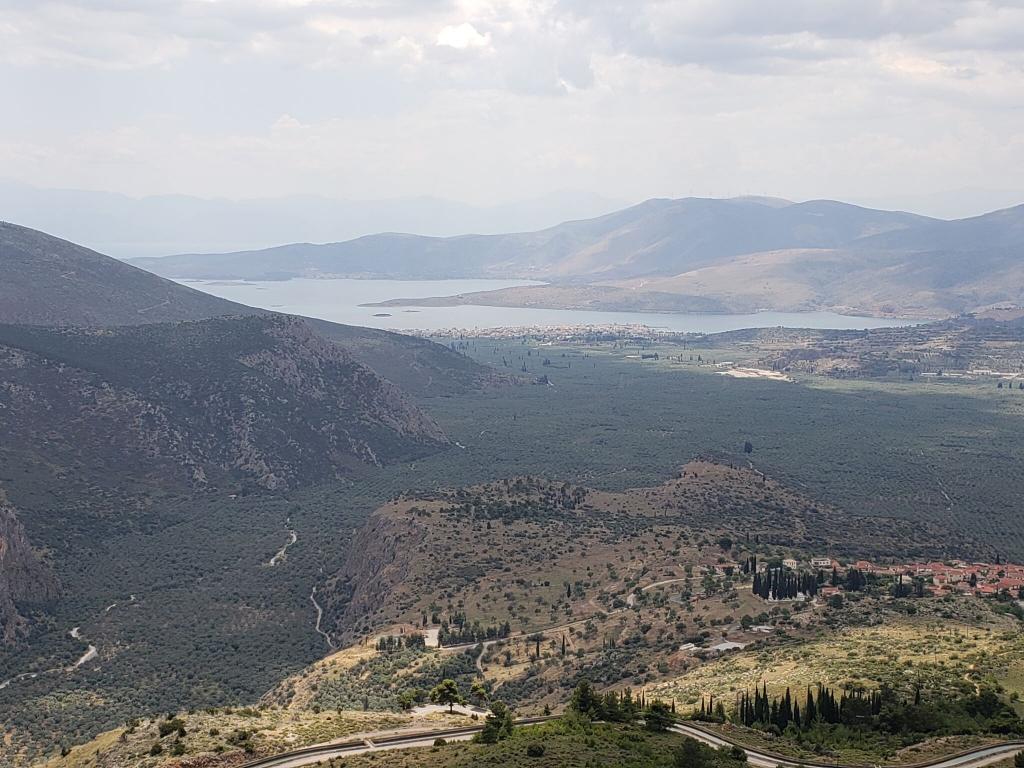
People came to Delphi not merely to consult the Pythia, but also to store precious objects and important documents in temple treasuries, on the assumption the gods would protect them. Here is the most well preserved of the treasuries on the road up to the Temple of Apollo—-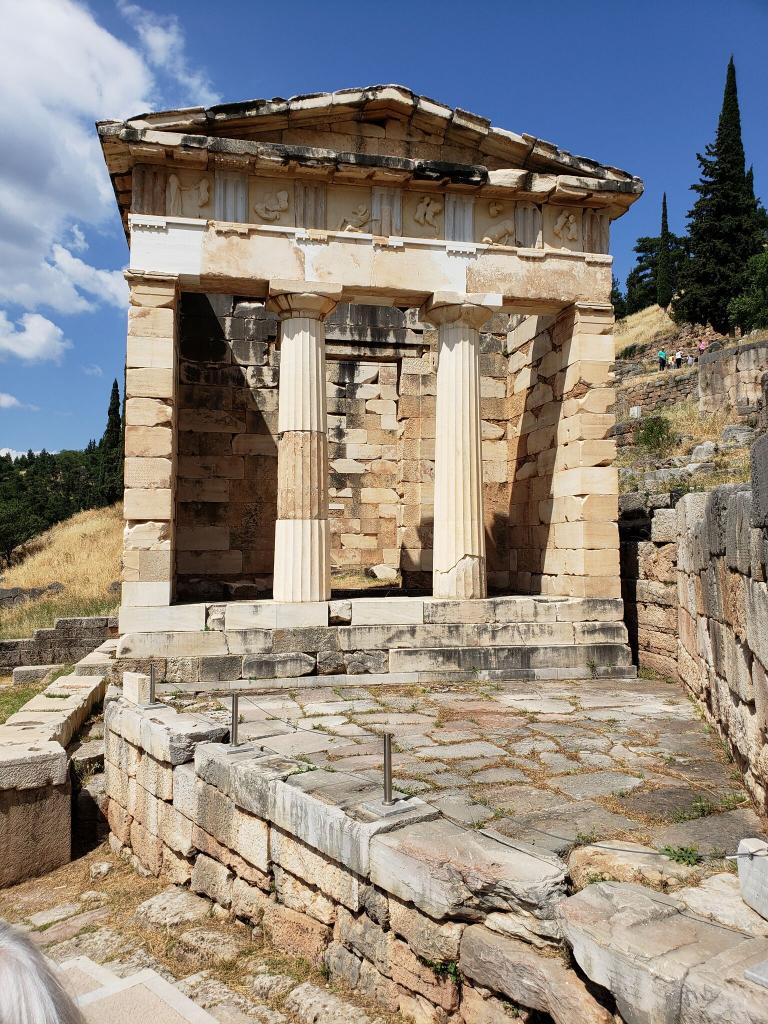
Here’s a map to show you the layout— there’s various temples, various temple treasuries, lots of inscriptions, for example about the manumission of slaves, which needed to happen in the presence of a priest.


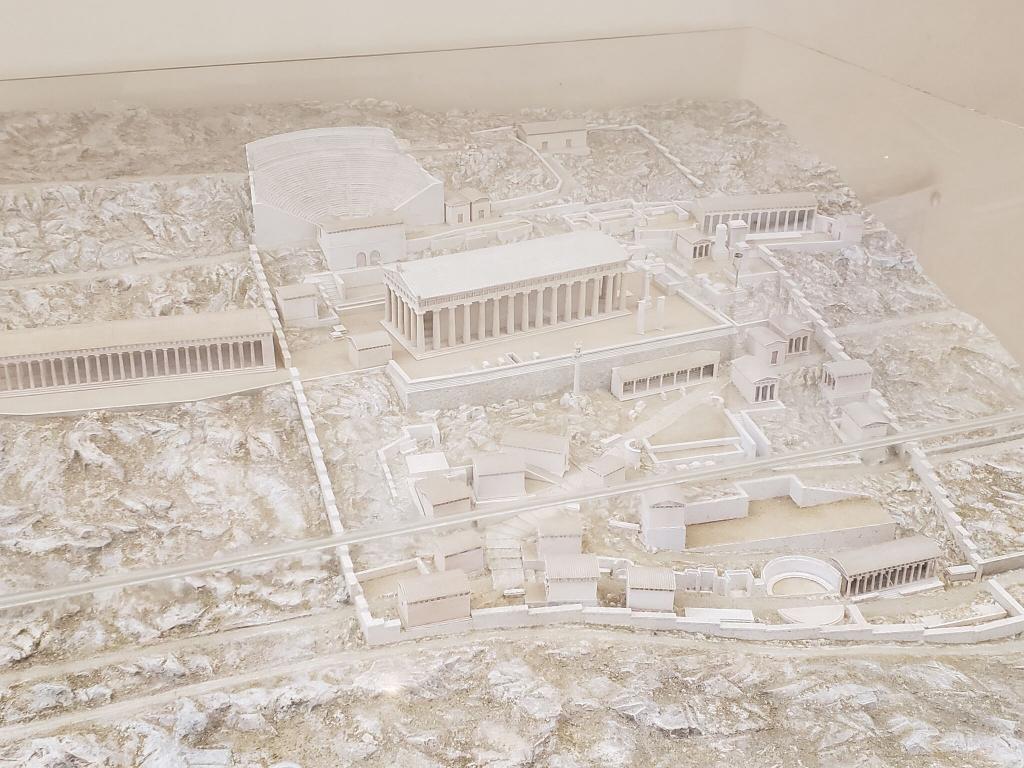
People did not come here just for purely religious purposes, they also went to the theater here, or to the games at the stadium further up the mountain. 
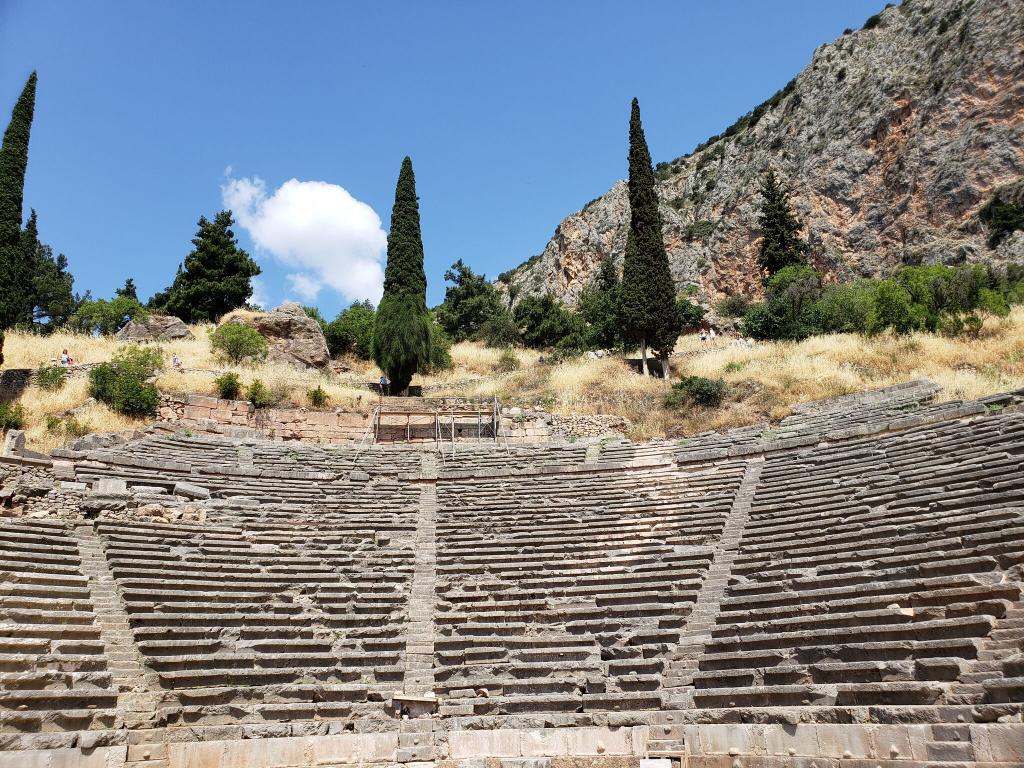
The inscriptions are important, for they reflect how crucial this cite was, the most famous oracle in all the Greek world was here, and so people came from all over to worship Apollo, to consult the Pythia, to manumit slaves, to visit the theater and games, to store important things…. here are some of the numerous inscriptions….

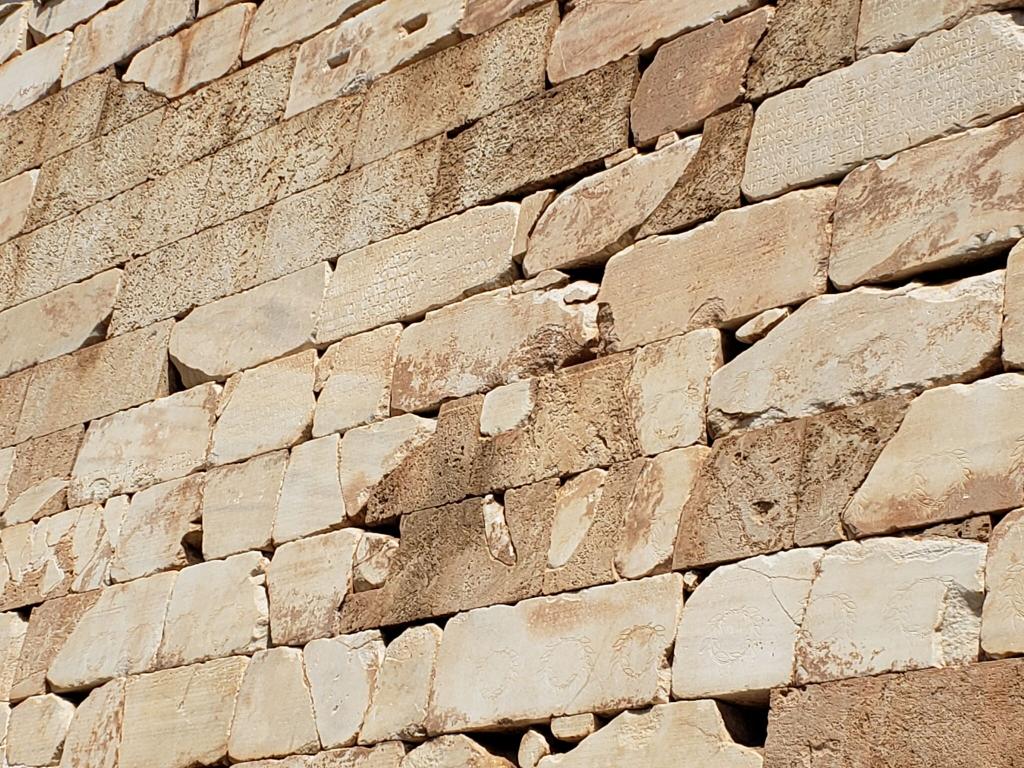 This gives new meaning to the phrase, the handwriting on the wall!
This gives new meaning to the phrase, the handwriting on the wall!
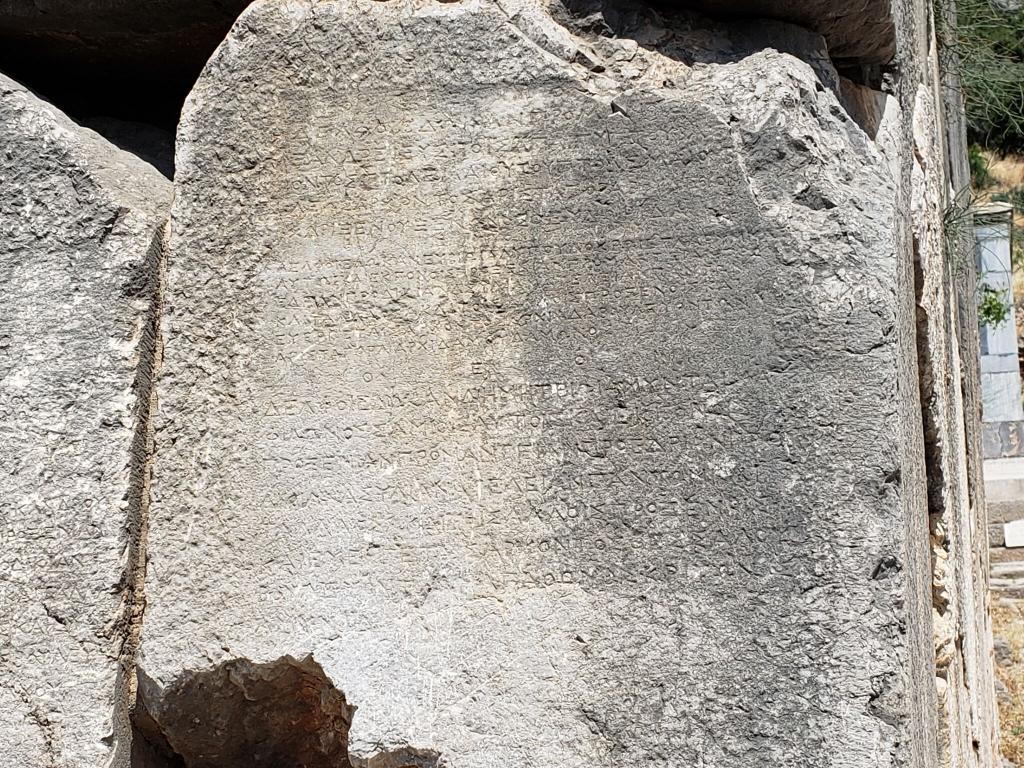
But of course the main reason to come here was to visit the temple of Apollo—-

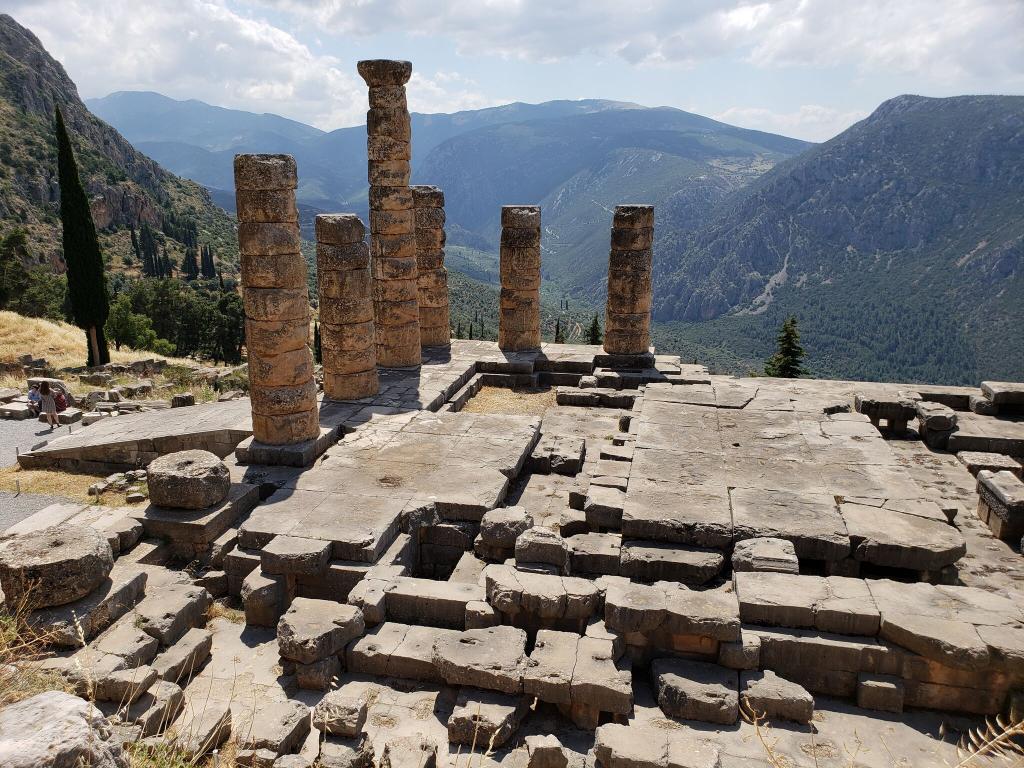 The pythia sat on her chair in the middle of the temple. Only the priests would go in and consult with her, the inquirers stayed outside, waiting for answers. It appears that here, as at Hierapolis where there was Plutonium, it was the noxious gases which causes the ‘mania’ of the prophetess, which gibberish the priests then interpreted as they would. There is evidence that the priests had agents down the mountain in the places of embarkation where questions would be asked by the agents as to the purpose of a person’s visit. They would then dispatch a runner up the mountain to inform the priests who was coming and why, so they could surprise the inquirers with insider knowledge— ‘ah, I perceive you are Agamenon, and have come to ask about fighting the Persians’. In other words, it was something of a racket.
The pythia sat on her chair in the middle of the temple. Only the priests would go in and consult with her, the inquirers stayed outside, waiting for answers. It appears that here, as at Hierapolis where there was Plutonium, it was the noxious gases which causes the ‘mania’ of the prophetess, which gibberish the priests then interpreted as they would. There is evidence that the priests had agents down the mountain in the places of embarkation where questions would be asked by the agents as to the purpose of a person’s visit. They would then dispatch a runner up the mountain to inform the priests who was coming and why, so they could surprise the inquirers with insider knowledge— ‘ah, I perceive you are Agamenon, and have come to ask about fighting the Persians’. In other words, it was something of a racket.

 Here is the snake column (the python, associated with the God Apollo and prophecy and the reason the oracle was called the Pythia)
Here is the snake column (the python, associated with the God Apollo and prophecy and the reason the oracle was called the Pythia) 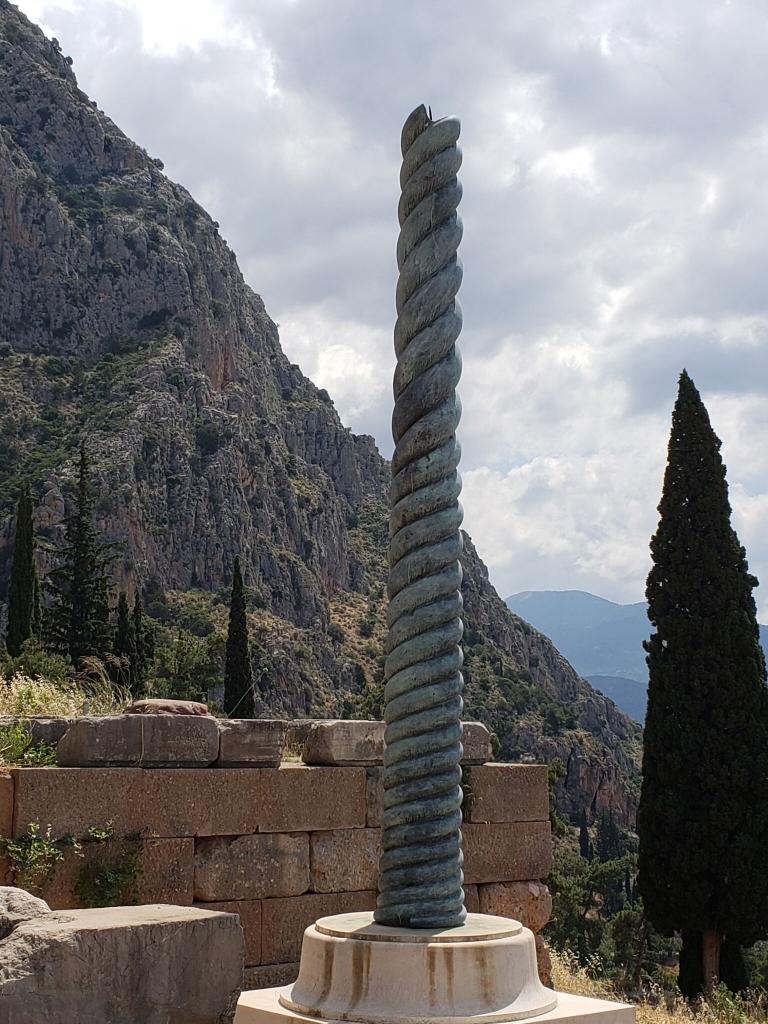 Unfortunately, the snake heads of the column were hauled off to Istanbul during the Ottoman occupation of Greece, and are in the museum there. They should be returned to Greece. Here’s the ramped entrance way into the Temple of Apollo….
Unfortunately, the snake heads of the column were hauled off to Istanbul during the Ottoman occupation of Greece, and are in the museum there. They should be returned to Greece. Here’s the ramped entrance way into the Temple of Apollo….
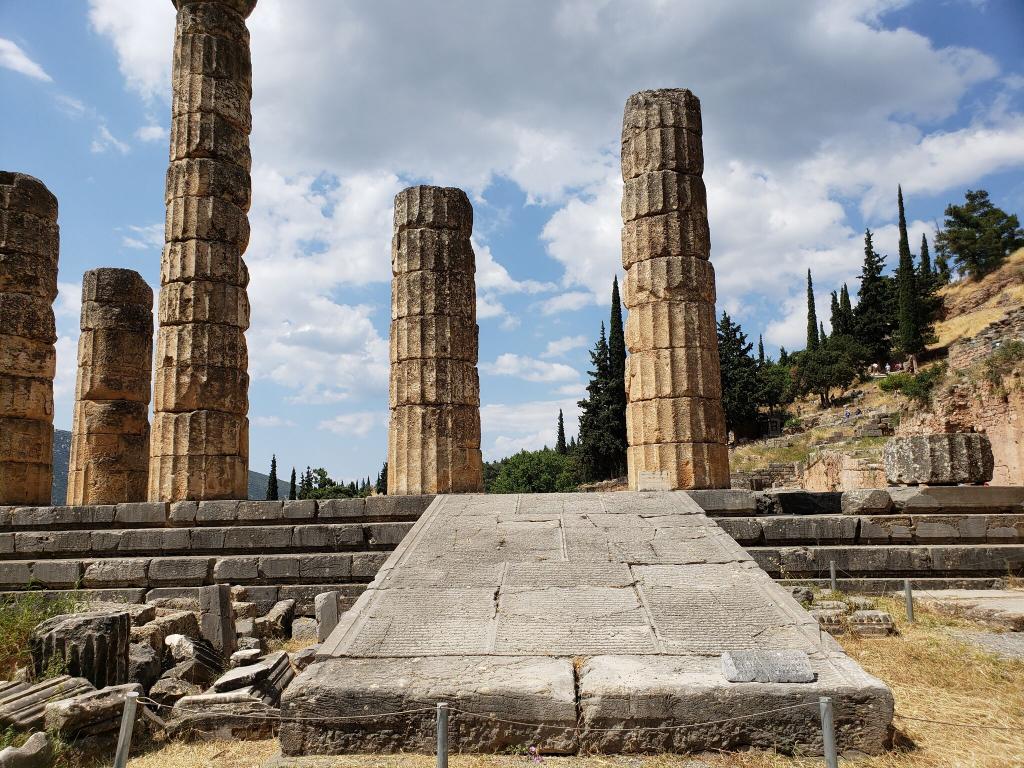 We will visit the Delphi museum in the next post.
We will visit the Delphi museum in the next post.



